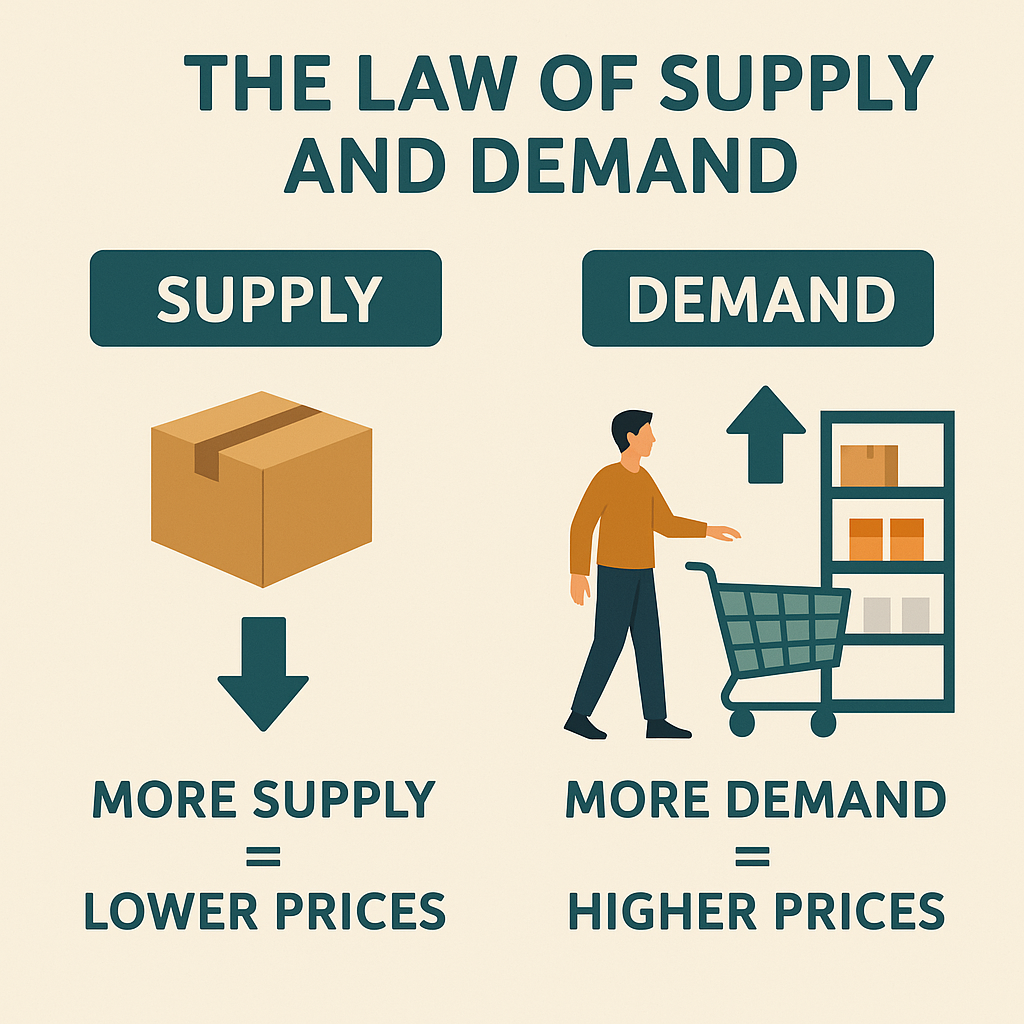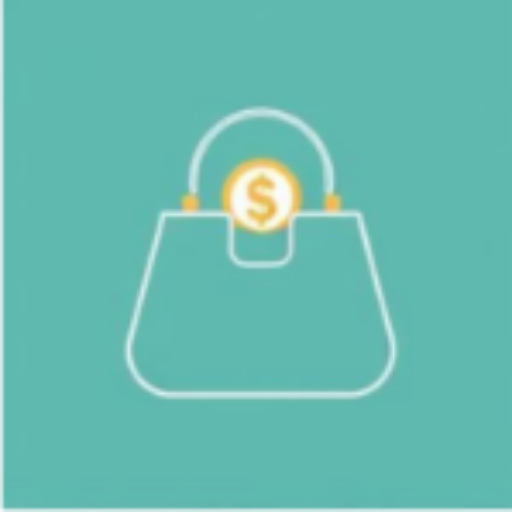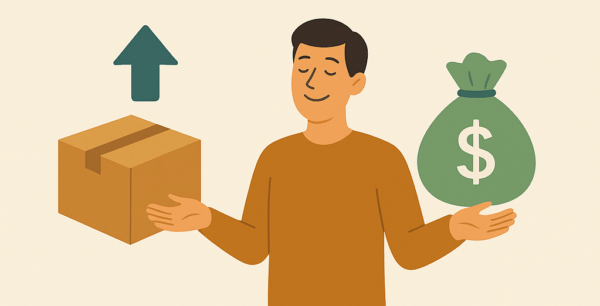Supply and Demand: The Secret to How Prices Work
Imagine this: you’re at your favorite shopping mall, looking for new running shoes. You pass by the Nike store and spot a sign that says:
“Liquidation Sale – All Items 50–70% Off!”
You can hardly believe your luck. You go in and buy brand-new running shoes for a fraction of what you expected to pay. Your happiness level jumps through the roof. You feel richer—and you are, if you manage not to spend the saved money on something else (a topic for another post).
But as you walk toward your car, you start to wonder:
What just happened? Why the sudden sale? Is it some miracle of running shoes?
Nope—it’s the hidden but very real law of supply and demand at work behind the scenes.
What Is the Law of Supply and Demand? (And Why You Should Care)
If you’ve never studied economics, “supply” and “demand” might sound like boring textbook jargon. But don’t be fooled—these two forces explain a huge chunk of how the world works.
From why your running shoes were on sale to why your favorite restaurant is always fully booked, supply and demand determine prices everywhere.
Here’s the simple breakdown:
- Supply = how much of something is available.
More supply usually means lower prices because there’s plenty to go around. - Demand = how much people want that thing.
Higher demand usually means higher prices—people are competing to get it.

So, the price you pay for anything is essentially the result of a tug-of-war between these two forces.
If there’s plenty of supply but not much demand, prices drop.
If supply is limited and demand is high, prices can skyrocket.
The Prime Drink Hysteria
One of the most vivid real-life examples of supply and demand in action? The massive hype around Prime, the sports drink that launched in 2022.
Even my kids who have limited access to screen-time and were only 5 and 7 at the time were influenced.
How it started
Prime is a line of hydration and energy drinks developed by an American media personality in collaboration with a YouTuber, and promoted by other online influencers. The marketing was brilliant: demand exploded globally, even reaching my family here in Prague, Czechia.
But here’s the catch—supply didn’t keep up.
Whether by design or surprise, the initial supply was limited. And with demand skyrocketing, prices soared to ridiculous levels.
- Retail price: about $2.50 per bottle
- Resale price: Up to $20 on eBay and other resale platforms
- Some unverified reports even mentioned higher black-market prices
And yes, I said black market. People were buying and selling Prime drinks outside of official retailers!
The company later explained they hadn’t expected such a viral response and were scrambling to scale up production. Yes, demand can change overnight — watch a trending YouTube video, and boom — you’re in the store looking for Prime. Supply, on the other hand, takes time. You need to manufacture, package, ship, and stock it.
How it ended
When you launch a new product in order to decide how many items to produce, you need to forecast what demand in the first several months will be. The founder’s official statement was that they did not expect such high demand and were doing their best to catch up with it by producing more drinks as fast as they could. But while demand can literally change overnight (you watch one YouTube video and go to the shop to buy a Prime drink), supply of goods takes time (there is a whole long process involved — to manufacture, package, ship, and stock it).
So for a while, prices remained high—until production caught up and the hype settled down.
In fact, by 2024, reports showed their sales had dropped by 50%. Why? The law of supply and demand had finally balanced out.
The Hidden Magic: How Prices Adjust Themselves
The key to understanding supply and demand is recognizing that when one of them changes, it affects the price (except in some rare cases that we will cover in a different post).
Let’s say a sudden snowstorm hits your city. Everyone rushes to buy a snow shovel: Demand spikes
- If the store only has a few left, prices may go up—they know people need them now
- But if prices go too high, some people will wait or find alternatives (buy used, borrow one, or tough it out)
- As a result, demand cools
- The store might lower prices to get products moving again
This self-regulating behavior is what economists call market equilibrium. It’s how the economy naturally finds a balance.
Same Story, Different Product
Back to Prime. The drink’s hype couldn’t last forever. Influencer buzz faded, new competitors entered the market, and production finally matched demand. With enough bottles on the shelves, prices normalized.
This isn’t just about drinks—it applies to almost everything you buy.
How You Can Use Supply and Demand to Your Advantage
Once you understand how prices work, you can start making smarter financial choices that actually make you happier and richer. Here’s how:
Shop Smart
- If something is in high demand, act fast if you really want it (e.g., concert tickets)
- But if it’s over-supplied, wait for discounts.
Example: I always buy winter shoes in February and summer shoes in October. - Some friends never buy new cars. Why?
They say around 20% of a brand new car’s value is wiped out as soon as it leaves the showroom.
Plan Your Purchases
- New gadgets often launch at high prices. Waiting a few months can save you big.
- We plan our holidays far in advance to buy cheaper plane tickets.
- Planning helps you avoid emotional purchases—and learn to apply the same discipline to saving money.
Sell Smart
Ever tried selling your stuff online? It’s easier than ever, thanks to platforms like Facebook Marketplace, Vinted, or eBay.
But here’s what people often forget:
- If supply is high (lots of similar items for sale), you may need to lower your price.
- But if you’re selling something rare or in demand, you can charge more.
And here’s an interesting twist thanks to recent inflation:
Even your old stuff might sell for more now.
Let’s say you bought an IKEA coffee table for $100 five years ago and hardly used it.
If you’re willing to sell it for half the original price ($50), that seems fair, right?
But wait—what if the same table now costs $180 new? Your old table can be easily priced at $90 (50% off the current price) and this now looks like a deal for you.
Final Thoughts: This Principle Is Everywhere
Whether you’re buying running shoes on sale, selling your old coffee table, or waiting for the next Coldplay concert, the law of supply and demand is always at work.
Once you start noticing it, it’s like unlocking a secret superpower. You’ll see prices for what they really are—a reflection of a shifting balance between people’s desires and the availability of things.
Next time you spot an “Out of Stock” message or a 70% off sticker, you’ll understand what’s going on behind the scenes.
And who knows? That knowledge might just help you make better purchases, save more, and live a life that’s a little happier, freer, and richer.

